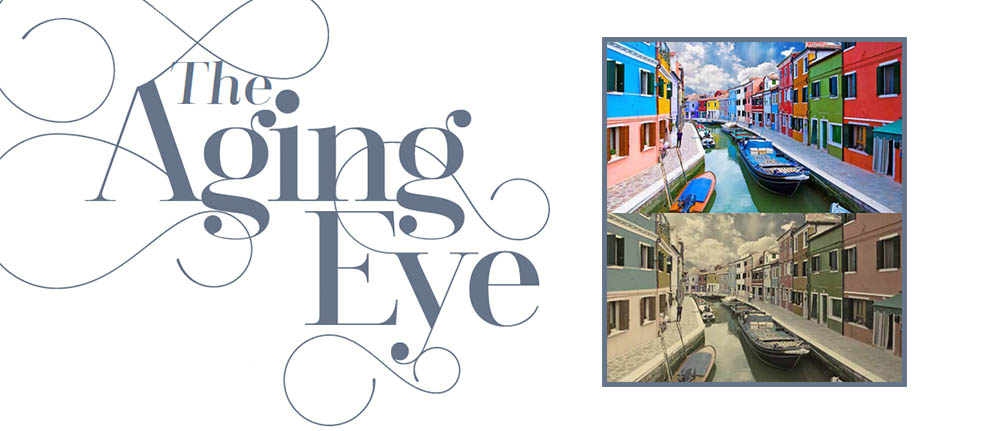
The Aging Eye by Kate Smith
I have no doubt that I can happily live with a less than youthful appearance. What might not be so easy for me to accept is a loss in my ability to clearly see colors, but that too may be inevitable. A 2014 study published in the journal Optometry and Vision Science shows that the risk of abnormal color vision increases as people age, with the most significant changes starting at around age 70.
Color Vision and the Aging Population
More commonly, as we age, the natural deterioration of the eye is referred to as Color Vision Deficiency. While the hue and saturation of a color may vary for those with this deficiency, lightness and brightness remain normal.
A 2011 study in The Journal of Gerontology on color vision and the aging eye demonstrated which particular qualities of color are more difficult for seniors to see. The study measured the “losses of color vision in the dimensions of hue, saturation, and brightness.” The study demonstrated a “loss of discrimination of saturation beginning at age 50, with rapid change noted after age 60. Similar findings were seen for hue but were not evident for brightness.” The participating scientists concluded with the hope that this “information will provide a basis for planning safer, more functional environments for elderly people.”
Read the Rest of the Article by Kate Smith at INSPIRE here »
